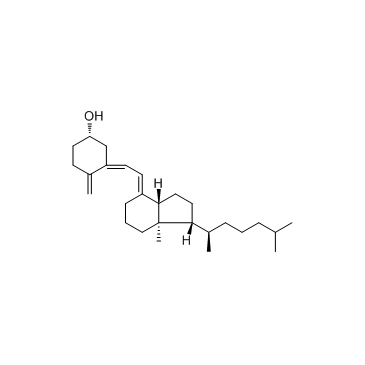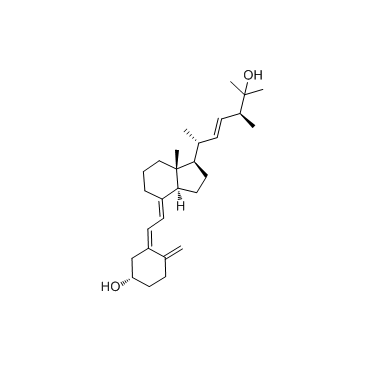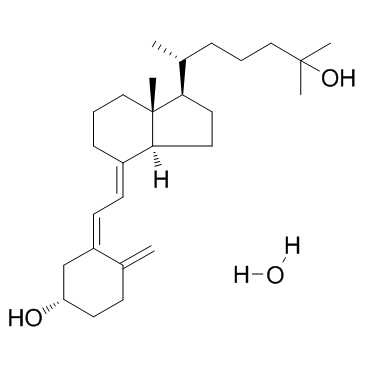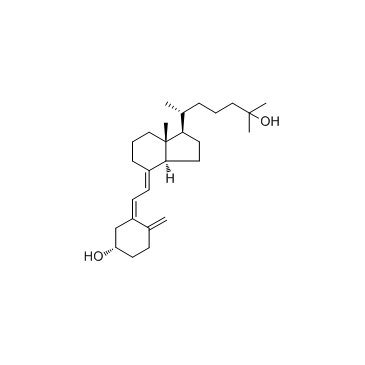| Structure | Name/CAS No. | Articles |
|---|---|---|
![3-[2-[1-(6-hydroxy-6-methylheptan-2-yl)-7a-methyl-2,3,3a,5,6,7-hexahydro-1H-inden-4-ylidene]ethylidene]-4-methylidenecyclohexan-1-ol Structure](https://image.chemsrc.com/caspic/301/73809-05-9.png) |
3-[2-[1-(6-hydroxy-6-methylheptan-2-yl)-7a-methyl-2,3,3a,5,6,7-hexahydro-1H-inden-4-ylidene]ethylidene]-4-methylidenecyclohexan-1-ol
CAS:73809-05-9 |
|
 |
Vitamin D3
CAS:67-97-0 |
|
 |
25-Hydroxycalciferol
CAS:21343-40-8 |
|
 |
Calcifediol
CAS:63283-36-3 |
|
 |
Calcifediol
CAS:19356-17-3 |